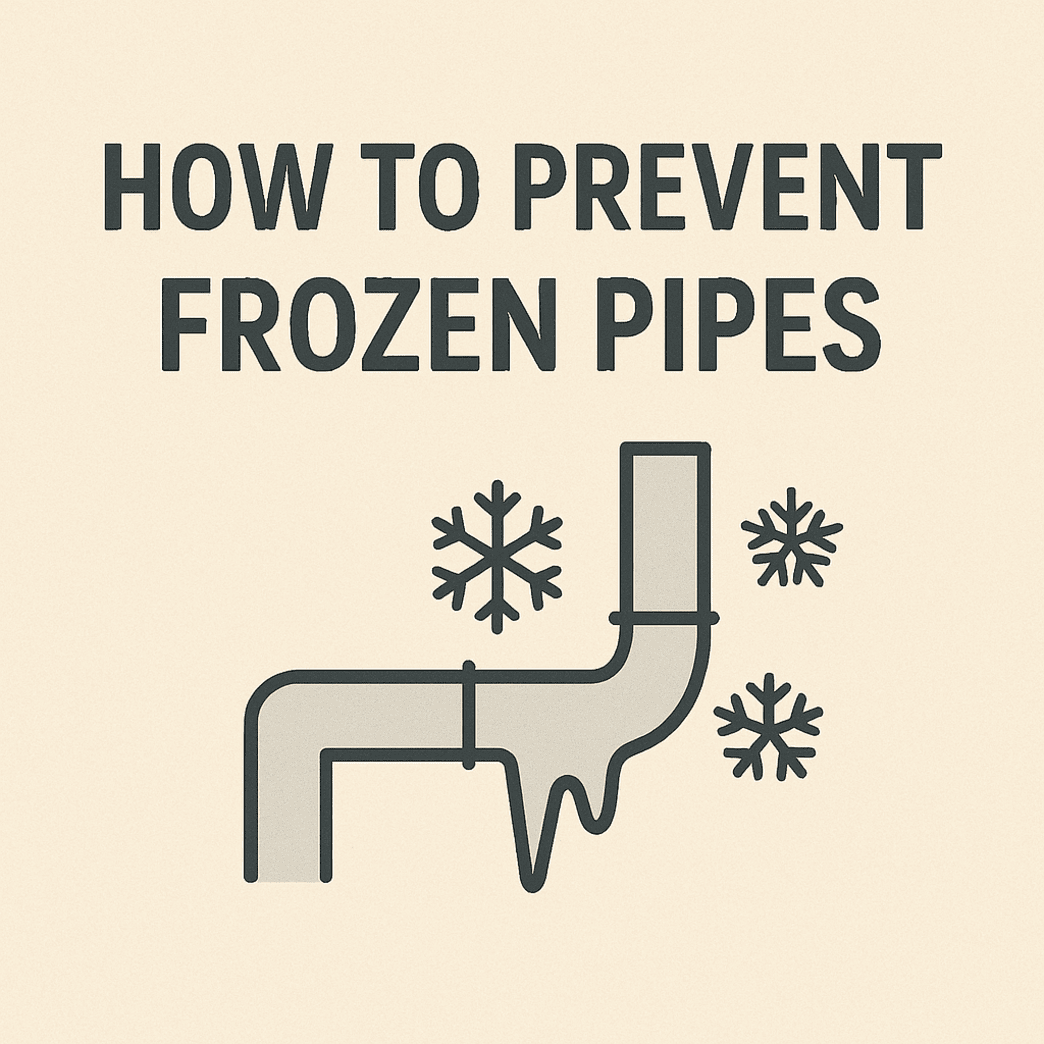When winter strikes with extreme cold, frozen pipes become a costly and dangerous threat to any property. The combination of frigid temperatures and poor insulation can lead to burst pipes, water damage, and expensive repairs. This comprehensive guide will teach you how to prevent frozen pipes, protect your plumbing system, and maintain the integrity of your home or building during even the harshest winter months.
Understanding the Risk: Why Frozen Pipes Are a Serious Problem
What Happens When Pipes Freeze?
When water inside a pipe freezes, it expands—creating immense pressure that can cause the pipe to crack or burst. Once the ice thaws, the ruptured pipe can release gallons of water, resulting in severe structural damage and mold growth.
Common Areas Where Pipes Freeze
- Exposed outdoor plumbing (hose bibs, sprinkler lines)
- Uninsulated basements, attics, or crawlspaces
- Pipes running through exterior walls or poorly heated areas
- Cabinets under sinks next to outside walls
Proven Strategies to Prevent Frozen Pipes
1. Insulate Pipes in Vulnerable Areas
Use foam pipe insulation, fiberglass wrap, or rubber sleeves to keep pipes above freezing temperatures. Focus on:
- Attics, basements, garages, and crawlspaces
- Pipes along exterior walls
- Outdoor hose bibs and faucets
2. Seal Air Leaks and Drafts
Cracks and gaps in your walls, floors, and around pipe openings can let freezing air in. Use spray foam, caulk, or weatherstripping to seal:
- Pipe entry points
- Dryer vents
- Foundation cracks
- Window and door frames
3. Keep Indoor Temperatures Consistent
Set your thermostat to a consistent temperature day and night. Avoid turning it down to save energy while you’re away—temperatures should stay above 55°F (13°C) even if no one is home.
4. Let Faucets Drip During Deep Freezes
A slow, steady drip from both hot and cold faucets keeps water moving, making it harder to freeze. This is especially useful for:
- Sinks on exterior walls
- Kitchens and bathrooms in unheated parts of the home
5. Open Cabinet Doors
Allow warm air to circulate around plumbing under kitchen and bathroom sinks, especially those located on outside walls. Opening cabinet doors allows heat to reach the pipes more effectively.
Advanced Prevention Techniques for Long-Term Protection
6. Install Pipe Heating Cables
Also known as heat tape or heat cables, these electric-powered products wrap around pipes and automatically turn on when temperatures drop. They’re ideal for:
- Outdoor pipes
- Crawlspaces
- Well pump systems
Pro Tip: Choose self-regulating heat cables with built-in thermostats for energy efficiency and safety.
7. Upgrade Your Insulation
Improve insulation in unheated areas such as basements, attics, and crawlspaces. Use fiberglass batt insulation or spray foam to maintain warm air and prevent heat loss around plumbing.
8. Use Interior Shutoff Valves for Exterior Faucets
Disconnect garden hoses and drain outdoor faucets. Then shut off the interior valve and leave the exterior faucet open to drain any remaining water and prevent pressure buildup from freezing.
Preventing Frozen Pipes During Power Outages
Power failures during extreme winters can be disastrous. To protect your pipes when heat sources fail:
- Use portable propane heaters safely (ensure proper ventilation).
- Wrap pipes in towels or blankets as temporary insulation.
- Shut off the main water supply and drain pipes to avoid expansion damage.
- Consider investing in a backup generator for uninterrupted heating during storms.
What to Do If Your Pipes Freeze
Even with precautions, pipes may still freeze. Here’s how to act fast:
Signs of Frozen Pipes
- No water coming from faucets
- Frost or condensation on pipes
- Unusual smells from drains or faucets
- Bulging or cracked sections of pipe
How to Thaw Frozen Pipes Safely
- Turn on the faucet—a small flow helps thawing and relieves pressure.
- Apply heat using a hair dryer, heating pad, or warm towels.
- Start closest to the faucet and work your way toward the frozen section.
- Never use an open flame or blowtorch—this is a major fire risk.
If you’re unsure or the pipe is inaccessible, call a licensed plumber immediately.
Winterization Checklist for Homeowners
| Task | Priority | Tools Needed |
| Insulate exposed pipes | High | Foam sleeves, tape |
| Drain outdoor faucets | High | Hose bib key |
| Seal air leaks | Medium | Caulk, spray foam |
| Install heat cables | Medium | Heat tape |
| Keep thermostat above 55°F | High | Smart thermostat |
| Let faucets drip | Medium | N/A |
| Open cabinets | Low | N/A |
| Schedule plumbing inspection | High | Professional plumber |
Professional Help: When to Call the Experts
If your home has:
- Complex plumbing layouts
- Previous water damage
- A history of frozen pipe issues
…it’s wise to consult a certified HVAC or plumbing professional. They can conduct a full winterization inspection, recommend tailored solutions, and install advanced protection systems like smart leak detectors or automatic pipe heaters.
Conclusion: Protecting Your Home Starts with Prevention
Extreme winter conditions can’t be avoided, but frozen pipes can. By taking proactive steps, insulating effectively, maintaining steady heat, and acting quickly during emergencies, homeowners can dramatically reduce the risk of plumbing disasters. Prevention is far more affordable and less stressful than emergency repairs or water damage recovery.
Don’t wait until the cold strikes—prepare now, and your pipes (and wallet) will thank you.


